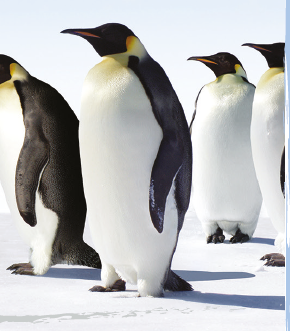The Emperor Penguin
The emperor penguin is the tallest and heaviest of all living penguin species and lives in Antarctica. The male and female are similar in size. The backside and head are black, the belly is white, the breast is pale-yellow and ear patches are bright yellow. Like all penguins, it can’t fly. Wings are flattened into flippers for a marine habitat.
Its diet consists mostly of fish, but it can also include a squid. In hunting, the species can stay underwater up to 18 minutes.
It’s the only penguin species that can breed during the Antarctic winter. Emperor penguins trek 50–120 km over the ice to breeding colonies which may include thousands of penguins. The female lays a single egg, which stays with the male while the female returns to the sea to feed. Parents take turns caring for their chick in the colony. The lifespan is typically 20 years in the wild, although some individuals may live to 50 years of age.
Emperor penguins have been in the “near –threatened species” list of the World Conservation Union since 2012. World Conservation Union is planning to include the emperor penguin in the “endangered species” list soon because its population has decreased in the past 4 years.
The emperor penguin’s habitat and its food supply are at risk because of climate change. The emperor penguin is a social animal. It hunts and dives together. It lives in colonies. It also has the ability to communicate with a variety of vocal sounds. When an emperor penguin loses its mate in the huge colony, or when it senses a threat to the colony, these vocal sounds prove to be very helpful.

